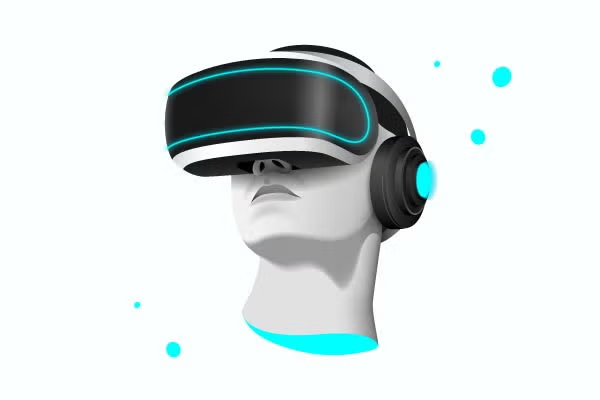
VR Content Creation: How It Works and Software You Need
Virtual reality (VR) content creation follows a lot of the same processes involved in creating 3D assets for video games and other media. Here we provide an overview of the VR content creation process and a primer on what VR creation software you might need to get started.
Read along or jump ahead to the section that interests you the most.
➡️ Free Industry-Leading VFX Tools
Back to topWhat Is VR Content?
Virtual reality (VR) content is any object or experience made for a virtual reality environment. An example of VR content would be a virtual golf game, or simply a golf club (object) used in the game.
VR content might be interactive, like a game, or it might be passive, like a video.
More game developers, content creators, and even teams in other industries like retail are finding new ways to reach their audiences. That means VR content is taking a lot of creative new forms.
Back to topHow to Create VR Content
How VR content is created depends on what type it is. There are different processes for video content and for 3D VR content creation.
VR Video Creation
A standard video viewed in a VR headset could be considered VR content. But to create a more immersive experience, the steps are a little different.
- Film a scene using a camera capable of taking a 360-degree panorama video, aka an omnidirectional camera.
- Stitch and process the video with stitching software (which may be provided by the camera manufacturer). This process combines film taken from multiple angles into one file. The edges of each screen are “stitched” together so the scene will appear seamless in VR.
- Edit the video with video editing software, like you would a standard video. This is where you can adjust lighting and color, cut scenes, add transitions, and so on. This is also the step where you can make changes specifically for a more immersive experience. For example, you can add directions to indicate when the viewer should look behind them.
VR Asset Creation: Basic Steps
The basic steps of creating a VR asset are similar to creating a 3D game asset:
- Concept
- Sculpting
- UV Mapping
- Baking and Texturing
- Lighting and Editing
Alternatively, VR assets can be made by creating a 3D scan of real-world objects and spaces. Scans can be made using mobile apps like Canvas or Matterport.
Things to Consider for Creating VR Assets
Some differences between creating standard 3D assets and creating VR assets may include:
- Scale: It’s important to make sure the scale of VR objects is realistic and comfortable, especially if they will be interacted with directly.
- Polycount: VR assets need to have a much lower polycount than objects in a PC/console game. That is because everything must be run at a higher framerate on VR (in order to prevent motion sickness) and because they need to be rendered twice (one for each eye).
- Textures: Avoid too many textures. Combine multiple textures into one big one — it’s easier for the game engine to load one large texture than many small ones.
VR Creation Software
There is a lot of overlap between VR content creation software and game development software. Some software involved in creating VR content includes:
- Game engines like Unreal or Unity.
- Art programs like Photoshop.
- 3D animation software/modeling programs like Maya.
- Digital asset management tools like Helix DAM or Shotgrid.
Version Control for VR Content Creation
Any teams creating content that involves game engines and multiple digital assets need version control. Version control tracks changes to your digital assets, which is difficult-to-impossible to do manually. It helps you resolve conflicts when merging code from multiple sources. And it enables multiple people to contribute to a project more easily.
Master VR Content with Helix Core + Helix DAM
Helix Core is the version control trusted by video game industry pros for a reason. It’s the only system that can handle the massive binary files involved in using a game engine. Helix DAM is a game asset manager for artists and creatives, built on top of Helix Core. It gives teams a visual library of their assets, helping them find, track, and review them easily. This duo offers the speed and reliability needed to create VR content.
Helix Core
Helix Core is free for small teams of up to five users and twenty workspaces.
➡️ start using helix core — Free
Helix DAM
Sign up to try Helix DAM for free in our sandbox for 14 days.
Back to top